
Top SEO Tips to Boost Your Organic Ranking and Traffic in 2025
In the ever-evolving digital landscape of 2025, staying ahead in search engine optimization (SEO) is not just beneficial—it’s crucial for businesses aiming to enhance their online visibility, drive consistent organic traffic, and achieve sustainable growth. SEO is no longer limited to stuffing keywords and building backlinks; it has transformed into a dynamic field that blends technical prowess, content quality, and user experience. This comprehensive guide delves deep into the most effective SEO strategies, enriched with fun facts, pro tips, detailed tables, and insightful charts to make your SEO journey both engaging and informative.
1. Introduction to SEO in 2025
SEO in 2025 is about delivering value, ensuring seamless user experiences, and adapting to ever-changing search engine algorithms. With the rise of AI-driven search behaviors, voice search, and mobile-first indexing, businesses need to adopt a holistic SEO approach. It’s not just about ranking high; it’s about providing relevant, high-quality content that meets user intent.
Fun Fact: Did you know that over 68% of online experiences begin with a search engine? (Source: Statista) Moreover, websites on the first page of Google receive over 90% of total traffic!
2. Understanding Google’s Algorithm Updates
Google frequently updates its algorithms to improve search result relevance, ensuring users receive the most accurate, useful, and trustworthy information. These updates can significantly impact website rankings, making it essential for digital marketers and SEO professionals to stay informed and adapt their strategies accordingly.
Key Focus Areas in 2025:
1. E-E-A-T (Experience, Expertise, Authoritativeness, Trustworthiness)
E-E-A-T is a critical framework that Google uses to evaluate the quality of content. In 2025, the emphasis on E-E-A-T has grown stronger, influencing how websites are ranked.
Experience: Does the content reflect real-world, hands-on knowledge? For instance, a product review written by someone who has genuinely used the product holds more value.
Expertise: Is the content created by someone knowledgeable in the subject matter? This is particularly important for YMYL (Your Money Your Life) topics like health, finance, and legal advice.
Authoritativeness: Does the website or author have a strong reputation in their industry? Backlinks from reputable sites and positive online mentions enhance authority.
Trustworthiness: Is the content reliable and accurate? Secure websites (HTTPS), transparent authorship, and factual accuracy contribute to trustworthiness.
Pro Tip: Showcase author credentials, cite reputable sources, and maintain content accuracy to improve E-E-A-T scores.
2. Core Web Vitals
Core Web Vitals are a set of metrics introduced by Google to measure the user experience of a website. These metrics focus on:
Largest Contentful Paint (LCP): Measures loading performance. Aim for LCP under 2.5 seconds.
First Input Delay (FID): Measures interactivity. A good FID score is less than 100 milliseconds.
Cumulative Layout Shift (CLS): Measures visual stability. Aim for a CLS score below 0.1 to ensure smooth browsing.
These metrics directly impact search rankings, as they reflect the quality of user experience on a website.
3. AI and Machine Learning Integration
Google increasingly relies on AI and machine learning to refine its search algorithms. Technologies like RankBrain and BERT help Google understand:
User Intent: Deciphering what users are really looking for, even with vague or complex queries.
Contextual Relevance: Understanding the context of search terms to deliver more accurate results.
Content Semantics: Evaluating the meaning behind words rather than just keyword matching.
Pro Tip: Regularly check Google’s Search Central Blog for updates to stay informed. Staying updated with Google’s core updates can help you adjust your strategies proactively.
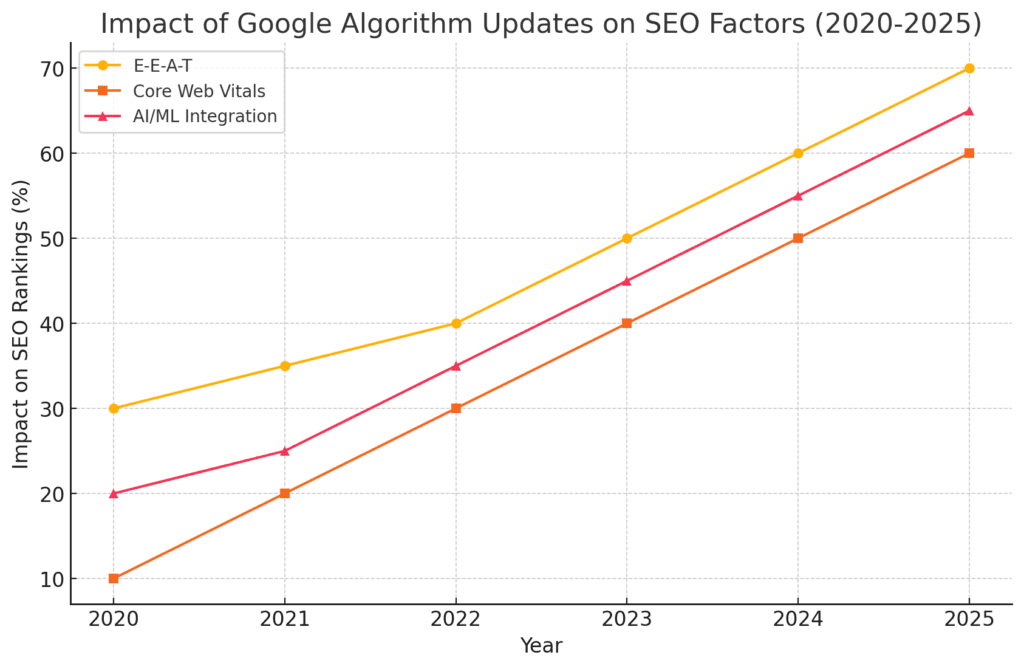 EEAT[/caption]
EEAT[/caption]
3. On-Page SEO Techniques
On-page SEO refers to optimizing individual web pages to rank higher in search engine results pages (SERPs) and attract more relevant traffic. Unlike off-page SEO, which focuses on external signals like backlinks, on-page SEO is entirely within your control. It encompasses content quality, HTML structure, and website architecture to improve both search engine visibility and user experience.
Key Elements:
1. Title Tags & Meta Descriptions
Title Tags: These are the clickable headlines that appear in search engine results. A well-crafted title tag helps search engines understand the topic of your page and encourages users to click.
- Best Practices:
- Keep it concise (under 60 characters).
- Place primary keywords at the beginning.
- Make it compelling to boost click-through rates (CTRs).
- Avoid keyword stuffing.
Meta Descriptions: Although not a direct ranking factor, meta descriptions influence CTR. They provide a brief summary of your content.
- Best Practices:
- Keep it under 160 characters.
- Use action-oriented language.
- Include relevant keywords naturally.
Pro Tip: Think of title tags and meta descriptions as your content’s sales pitch. Make them engaging and informative to attract more clicks.
2. Header Tags (H1, H2, H3, etc.)
Header tags structure your content, making it easier for both search engines and users to navigate. They create a hierarchy that improves readability.
- H1 Tag: Reserved for the main headline. It should be unique and include the primary keyword.
- H2 and H3 Tags: Used for subheadings to organize content into logical sections.
- H4-H6 Tags: For further sub-categorization, if needed.
Best Practices:
- Use only one H1 tag per page.
- Incorporate keywords naturally.
- Break long-form content with H2s and H3s to improve readability.
Pro Tip: Well-structured headers improve your chances of getting featured snippets on Google.
3. Keyword Optimization
Keyword optimization involves strategically placing relevant keywords throughout your content to signal its topic to search engines.
- Primary Keywords: Target main search queries.
- Long-Tail Keywords: More specific, less competitive phrases.
- LSI Keywords: Related terms that help search engines understand context.
Best Practices:
- Place primary keywords in the title, headers, first 100 words, and URL.
- Use long-tail keywords for niche targeting.
- Maintain keyword density around 1-2% to avoid over-optimization.
Pro Tip: Use tools like Google Keyword Planner, Ahrefs, and SEMrush to find high-impact keywords.
4. Internal Linking
Internal linking connects different pages within your website, improving site structure and helping search engines discover new content.
- Benefits:
- Enhances user navigation.
- Distributes page authority (link juice).
- Helps search engines crawl your site effectively.
Best Practices:
- Use descriptive anchor text.
- Link to relevant pages naturally within the content.
- Ensure a logical, user-friendly linking structure.
Pro Tip: Link to relevant blogs on Nova Vision Media Tech to enhance authority and guide users effectively.
5. Content Depth
Content depth refers to the comprehensiveness of your content. Google favors content that provides in-depth, valuable information.
- Key Aspects:
- Cover topics thoroughly with supporting data, case studies, and examples.
- Address user intent by answering potential questions.
- Use multimedia (images, videos, infographics) to enrich content.
Best Practices:
- Write long-form content (1,500+ words) for competitive keywords.
- Update content regularly to maintain relevance.
- Use bullet points, numbered lists, and short paragraphs for easy reading.
Pro Tip: Comprehensive content increases dwell time and reduces bounce rates, both of which are positive SEO signals.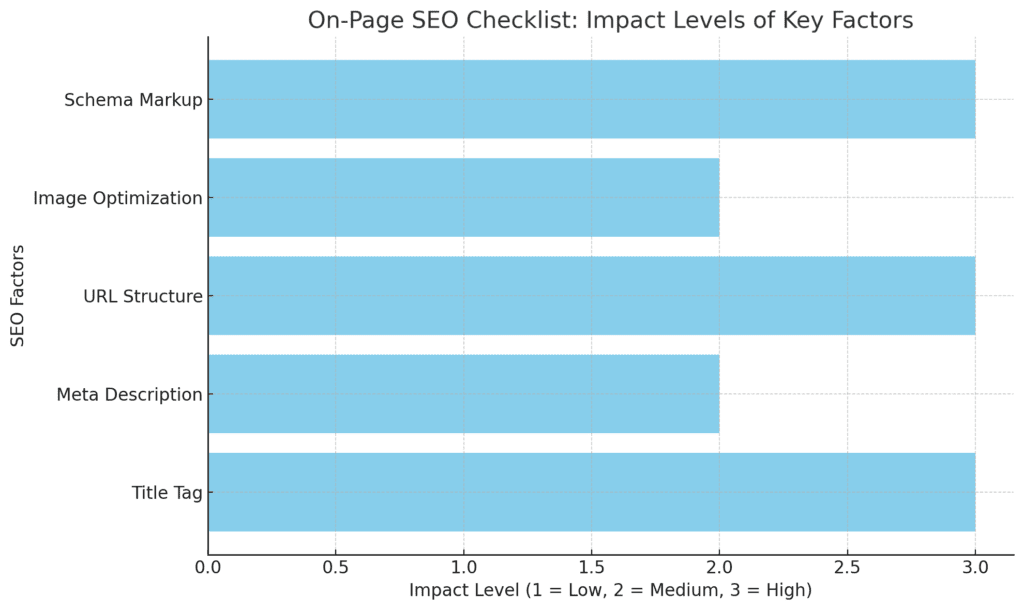
4. Off-Page SEO Strategies
Off-page SEO focuses on activities conducted outside of your website to improve its search engine rankings. While on-page SEO optimizes content and structure, off-page SEO builds your site’s authority and relevance through external signals. These strategies help search engines understand how others perceive the value of your website.
Key Focus Areas:
1. Backlink Building
Backlinks, also known as inbound links, are links from other websites that point to your site. High-quality backlinks from authoritative websites signal to search engines that your content is credible and valuable.
- Types of Backlinks:
- Editorial Backlinks: Earned naturally when other websites find your content valuable.
- Guest Blogging Backlinks: Acquired by contributing content to reputable websites.
- Resource Page Links: Added to resource pages as useful references.
- Best Practices:
- Focus on quality over quantity.
- Build links from relevant, authoritative sites.
- Avoid link farms and black-hat techniques, which can lead to penalties.
Pro Tip: Build backlinks from government websites like India.gov.in to enhance credibility and authority.
2. Social Signals
Social signals refer to the engagement your content receives on social media platforms, including likes, shares, comments, and mentions. While not a direct ranking factor, strong social engagement can drive traffic and improve brand visibility.
- Benefits:
- Increases content reach and visibility.
- Drives referral traffic.
- Enhances brand awareness and authority.
Best Practices:
- Share high-quality, engaging content regularly.
- Encourage audience interaction through comments and shares.
- Leverage influencers to amplify your content.
3. Guest Blogging
Guest blogging involves writing articles for reputable websites in your industry. It helps build backlinks, increase brand exposure, and establish authority.
- Benefits:
- Earns high-quality backlinks.
- Expands your audience reach.
- Builds relationships with industry influencers.
Best Practices:
- Choose authoritative sites with strong domain authority.
- Provide valuable, original content.
- Include relevant links to your website naturally within the content.
4. Brand Mentions
Brand mentions refer to instances where your brand is mentioned online, even without a direct link. Search engines view these mentions as indicators of authority and relevance.
- Types:
- Linked Mentions: Mentions that include a hyperlink to your site.
- Unlinked Mentions: Brand mentions without a link, which still contribute to SEO.
Best Practices:
- Monitor brand mentions using tools like Google Alerts and Mention.
- Engage with mentions to build relationships and encourage future links.
5. Technical SEO for Enhanced Performance
Technical SEO ensures that search engines can crawl, index, and render your website effectively. It focuses on optimizing the infrastructure of your website to enhance performance, security, and user experience.
Essential Aspects:
1. Site Speed
Site speed is a critical ranking factor. Faster websites provide better user experiences, leading to lower bounce rates and higher engagement.
- Tools for Analysis:
- PageSpeed Insights
- GTmetrix
- Lighthouse
- Optimization Techniques:
- Minimize HTTP requests.
- Optimize images.
- Use browser caching and content delivery networks (CDNs).
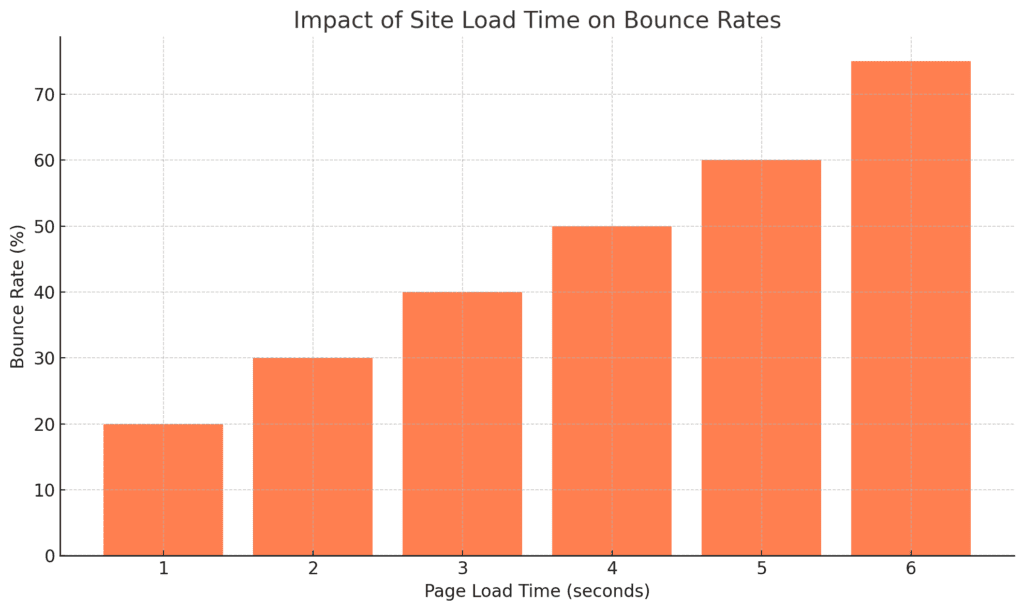
2. Secure Website (HTTPS)
Google prioritizes secure websites. HTTPS encrypts data between the user and the website, ensuring secure transactions and data protection.
- Best Practices:
- Obtain an SSL certificate.
- Redirect HTTP to HTTPS.
- Regularly update security protocols.
3. XML Sitemap
An XML sitemap is a file that lists all important pages of your website, helping search engines understand your site’s structure.
- Benefits:
- Improves crawlability.
- Helps new content get indexed faster.
- Identifies site structure for search engines.
Pro Tip: Submit your XML sitemap to Google Search Console for better indexing.
4. Robots.txt File
The robots.txt file instructs search engine crawlers on which pages to crawl and which to ignore.
- Best Practices:
- Block unnecessary pages (e.g., admin pages) from indexing.
- Ensure important pages are not accidentally blocked.
- Test using Google Search Console’s Robots.txt Tester.
6. Mobile-First Indexing and Its Impact
Since the majority of searches are conducted via mobile devices, Google prioritizes mobile-friendly sites in its indexing. Mobile-first indexing means that Google predominantly uses the mobile version of a website for ranking and indexing.
Checklist for Mobile Optimization:
- Responsive Web Design: Ensures your site adapts to different screen sizes.
- Fast Loading Speed: Optimizes performance on mobile networks.
- Optimized Images for Mobile: Compress images without compromising quality.
- Touch-Friendly Navigation: Ensures buttons and links are easy to tap.
Detailed Impact:
- User Experience: Mobile-friendly sites provide better user experiences, reducing bounce rates.
- Search Rankings: Mobile usability is a significant ranking factor in Google’s algorithm.
- Traffic Growth: Mobile optimization increases accessibility, attracting more traffic.
Pro Tip: Test your site with Google’s Mobile-Friendly Test to identify and fix issues.
7. Importance of User Experience (UX) in SEO
User Experience (UX) has become a critical ranking factor for search engines, particularly Google. A positive UX ensures visitors have an enjoyable, efficient, and seamless interaction with your website, which directly impacts key SEO metrics.
Key Metrics:
- Bounce Rate: Measures the percentage of visitors who leave your site after viewing only one page. A high bounce rate indicates poor UX, while a low rate suggests engaging content.
- Average Session Duration: Indicates how long users stay on your site. Longer sessions typically mean higher engagement.
- Pages per Session: Shows how many pages a user visits during one session. More pages suggest users find the content valuable.
- Dwell Time: Measures the time a user spends on a page before returning to the search results. Longer dwell times are a positive SEO signal.
Pro Tip: Use heatmaps and session recordings (via tools like Hotjar) to analyze user behavior, identify drop-off points, and make data-driven improvements to enhance UX.
8. Voice Search Optimization
With the growing adoption of smart devices like Alexa, Siri, and Google Assistant, voice search optimization has become essential. Voice searches are conversational, direct, and often location-based.
Optimization Tips:
- Use Natural, Conversational Language: People speak differently than they type. Focus on natural phrases and question-based keywords.
- Answer Questions Concisely: Create content that provides quick, direct answers to common queries. This format is ideal for featured snippets.
- Optimize for Local Queries: Many voice searches are local (e.g., “best coffee shop near me”). Use local keywords and ensure your business details are accurate.
Fun Fact: By 2025, it’s estimated that 50% of all searches will be voice-based, making it a pivotal area for SEO growth.
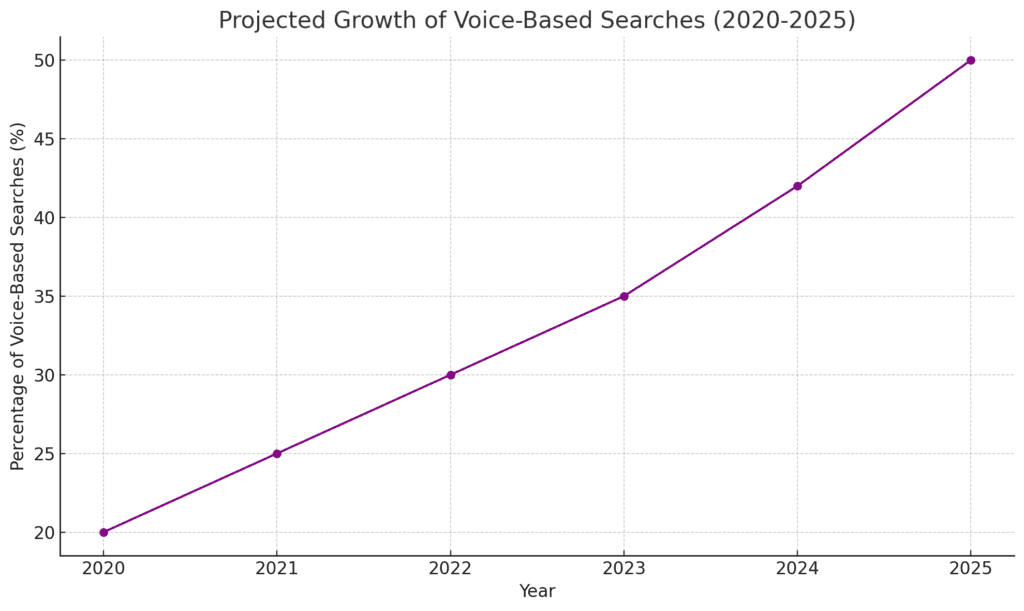
9. Video SEO: The Rising Trend
Video content is dominating digital marketing, with platforms like YouTube being critical for SEO. Videos improve engagement, increase dwell time, and enhance content reach.
Best Practices:
- Use Keyword-Rich Titles and Descriptions: Just like blog content, your video titles and descriptions should include relevant keywords.
- Add Transcripts and Captions: This improves accessibility and allows search engines to index the spoken content, boosting SEO.
- Optimize Video Thumbnails: Use high-quality, attention-grabbing thumbnails to improve click-through rates.
Fun Fact: YouTube is the second-largest search engine globally, processing over 3 billion searches per month!
10. Content Marketing and SEO Integration
Content is the backbone of SEO. High-quality, relevant content not only drives organic traffic but also fosters engagement, authority, and conversions.
Strategies:
- Create Pillar Content with Topic Clusters: Develop comprehensive content (pillar pages) supported by related articles (clusters) to improve topical authority.
- Update and Repurpose Old Content: Refresh outdated content to maintain relevance and repurpose it into different formats (e.g., infographics, videos).
- Focus on E-E-A-T Principles: Ensure content demonstrates Experience, Expertise, Authoritativeness, and Trustworthiness.
Pro Tip: Link your content to relevant pages on Nova Vision Media Tech to boost internal link equity and enhance SEO performance.
11. Local SEO for Businesses
For businesses with physical locations, optimizing for local search is vital to attract nearby customers and improve visibility in “near me” search queries.
Steps:
- Claim and Optimize Your Google Business Profile: Ensure your profile is complete with accurate information, photos, and business hours.
- Encourage Customer Reviews: Positive reviews build trust and influence rankings. Respond promptly to both positive and negative reviews.
- Use Local Keywords and Schema Markup: Incorporate location-specific keywords and add structured data (schema markup) to help search engines understand your business.
Pro Tip: Consistency in NAP (Name, Address, Phone Number) across all directories (Google, Yelp, Facebook, etc.) is crucial for strong local SEO performance.
12. SEO for E-Commerce Websites
E-commerce SEO requires a strategic approach to ensure product pages, categories, and technical elements are optimized for search engines. With thousands of products and dynamic content, e-commerce sites face unique SEO challenges.
Best Practices:
- Optimize Product Titles and Descriptions: Use relevant, high-converting keywords naturally within product titles and descriptions. Ensure each product page has unique content to avoid duplicate content issues.
- High-Quality Images with Descriptive ALT Text: Images enhance user experience. Use descriptive ALT tags with keywords to help search engines understand the image context, which also improves accessibility.
- Structured Data for Product Schema: Implement product schema markup to provide search engines with detailed information about your products, including price, availability, and ratings. This can lead to rich snippets in search results, increasing click-through rates.
Pro Tip: Optimize URL structures for categories and products, making them short, descriptive, and keyword-rich.
13. SEO Analytics and Performance Tracking
Regular monitoring and analysis are key to continuous SEO improvement. By tracking performance, you can identify what’s working, spot areas for improvement, and make data-driven decisions.
Tools to Use:
- Google Analytics 4: Offers insights into traffic sources, user behavior, and conversion tracking. It helps you understand how visitors interact with your site.
- Google Search Console: Provides data on search performance, indexing issues, keyword rankings, and website health.
- Internal CRM Tools: Track customer interactions, conversion rates, and sales performance to measure the effectiveness of your SEO strategies.
Pro Tip: Set up custom dashboards in Google Analytics to monitor key SEO metrics in real-time.
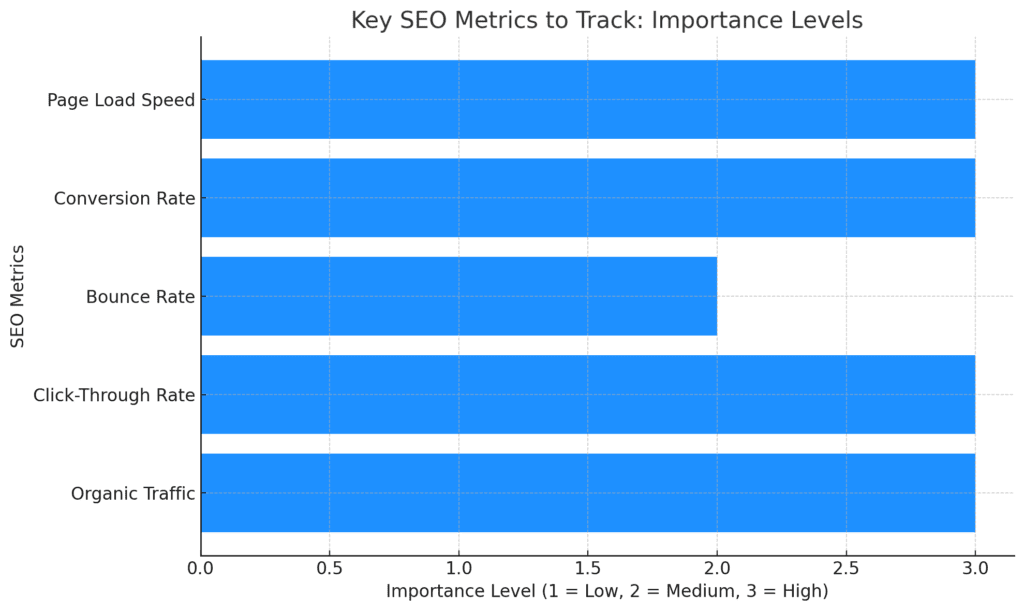
14. Pro Tips for Continuous Improvement
SEO is an ongoing process. Continuous improvement ensures your strategies remain effective as search algorithms evolve.
Key Strategies:
- Regular Audits: Conduct monthly SEO audits to identify technical issues, content gaps, and opportunities for improvement. Tools like Screaming Frog and SEMrush can automate audit processes.
- Content Refresh: Update old content regularly to maintain relevance. Add new statistics, update outdated information, and improve readability to keep content fresh.
- Competitor Analysis: Analyze competitors’ SEO strategies to identify what’s working for them. This can inspire new content ideas, backlink opportunities, and keyword strategies.
- Experimentation: Test new SEO techniques, such as different meta tag formats, content types, and internal linking structures. Measure their impact to understand what drives results.
Pro Tip: A/B test different page elements like headlines, CTAs, and images to optimize for higher conversions.
15. Common SEO Mistakes to Avoid
Avoiding common SEO mistakes can save your site from ranking penalties and traffic losses.
Key Mistakes:
- Keyword Stuffing: Overusing keywords can lead to penalties. Focus on natural, contextually relevant keyword usage.
- Ignoring Mobile Optimization: With mobile-first indexing, a non-optimized mobile site can severely hurt rankings. Ensure responsive design and fast load times on all devices.
- Poor-Quality Backlinks: Low-quality or spammy backlinks can trigger Google penalties. Aim for high-authority, relevant backlinks.
- Neglecting Technical SEO: Ignoring technical aspects like site speed, crawl errors, and XML sitemaps can hinder SEO performance.
- Duplicate Content Issues: Having identical content across multiple pages confuses search engines, diluting ranking potential. Use canonical tags to address this issue.
Pro Tip: Use tools like Copyscape to detect duplicate content and regularly audit your backlink profile with Google Search Console to identify toxic links.
16. Essential SEO Tips for 2025
Staying ahead in SEO requires continuous learning and adapting to new trends. Here are some essential SEO tips to boost your organic ranking and traffic in 2025:
1. Focus on User Intent
Understand what your audience is searching for and create content that meets their needs. Google prioritizes content that provides value and relevance. User intent can be categorized into informational, navigational, transactional, and commercial investigation intents.
Pro Tip: Use tools like Google Analytics, Search Console, and SEMrush to analyze user behavior, identify top-performing content, and adjust your content strategy accordingly.
2. Optimize for Voice Search
With the growing use of smart devices, voice search optimization is crucial. Use natural language, focus on question-based keywords, and structure content for quick answers.
Fun Fact: By 2025, over 50% of all searches are expected to be voice-based. People prefer voice search for its convenience, especially for local queries and quick information.
3. Leverage AI and Machine Learning
AI tools can help analyze data, predict trends, and optimize content. Integrate AI-driven insights to enhance your SEO strategy. Tools like ChatGPT, Jasper, and Google’s RankBrain help understand user intent better.
Pro Tip: Use AI for content generation, keyword analysis, and predictive search trends to stay ahead of competitors.
4. Improve Core Web Vitals
Page speed, interactivity, and visual stability are critical ranking factors. Regularly monitor and optimize your Core Web Vitals, focusing on metrics like Largest Contentful Paint (LCP), First Input Delay (FID), and Cumulative Layout Shift (CLS).
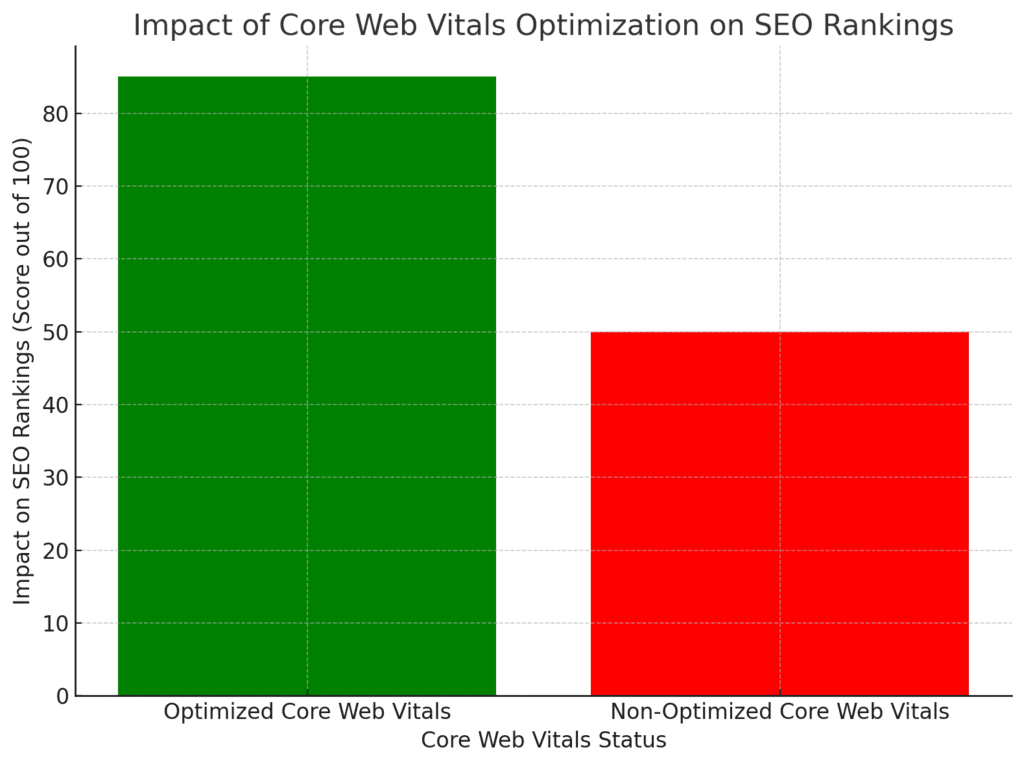
5. Enhance Mobile Experience
Ensure your website is mobile-friendly with responsive design, fast loading speeds, and easy navigation. Google’s mobile-first indexing means the mobile version of your site is the primary version for ranking.
Pro Tip: Use Google’s Mobile-Friendly Test to identify issues and improve user experience.
6. Build High-Quality Backlinks
Focus on earning backlinks from authoritative and relevant sites. Quality over quantity is key. Backlinks from educational, governmental, and niche-specific websites carry more weight.
Pro Tip: Engage in guest blogging, influencer collaborations, and create shareable content to attract natural backlinks.
7. Utilize Schema Markup
Implement structured data to help search engines understand your content better and improve your chances of appearing in rich snippets, knowledge graphs, and voice search results.
Pro Tip: Use schema markup for articles, FAQs, events, products, and reviews to enhance SERP visibility.
8. Regularly Update Content
Keep your content fresh and relevant. Update old blog posts with new information, images, and links. Search engines favor content that is regularly refreshed to maintain accuracy.
Pro Tip: Repurpose high-performing content into different formats like infographics, videos, and podcasts to reach wider audiences.
9. Optimize for Featured Snippets
Create content that answers specific questions concisely to increase your chances of appearing in featured snippets. Use bullet points, numbered lists, and clear headings.
Fun Fact: Featured snippets are also known as “position zero” because they appear above the first organic result, significantly increasing click-through rates.
10. Monitor and Analyze Performance
Use SEO tools to track your performance, identify issues, and measure the success of your strategies. Key metrics include organic traffic, bounce rate, average session duration, and conversion rates.
Pro Tip: Set up regular SEO audits to ensure your site remains optimized and competitive. Tools like Google Analytics, Search Console, and Ahrefs provide in-depth performance insights.
11. Optimize for Local SEO
If you have a local business, optimizing for local search is crucial. Claim your Google My Business listing, ensure NAP (Name, Address, Phone) consistency, and encourage customer reviews.
Pro Tip: Use location-specific keywords and create localized content to improve your visibility in local search results.
12. Focus on Content Depth and Authority
Long-form, in-depth content that thoroughly covers a topic tends to rank higher. Aim for comprehensive guides, case studies, and detailed tutorials.
Pro Tip: Include expert opinions, original research, and authoritative references to establish credibility and authority in your niche.
17. Conclusion
SEO in 2025 is dynamic, complex, and multi-faceted. By focusing on user experience, technical excellence, and high-quality content, you can achieve sustainable organic growth. Implement these strategies, stay adaptable to changes, and watch your website climb the SERPs.
For more insights and cutting-edge digital marketing strategies, explore Nova Vision Media Tech.


